Healthy Homes - Pests
Introduction
Any living organism that causes damage, economic loss, or transmits disease may be called a pest. Pests can be animals like insects or mice, unwanted plants like weeds, or microorganisms like bacteria. Some examples of pests are termites causing damage to our homes, dandelions in the lawn, or fleas and ticks on our dogs and cats. Other common examples of pests are cockroaches, ants, spiders, bed bugs and mosquitoes. It is important to keep your home pest free as some pests transmit disease and others can cause illness. The first step to keeping your home pest-free is to keep your home clean. This means not leaving food out, cleaning dishes and pans often, and not leaving pet food out. Clean floors and countertops often. Also, seal any holes that may allow pests inside as pests may find your home a good place to make their home. Dry warm places with a supply of food and water are attractive to pests.
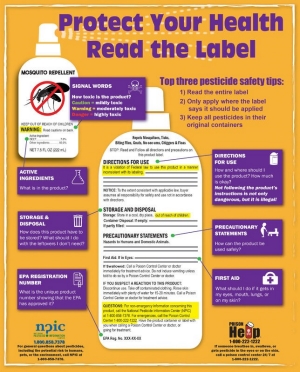
Pest management
Pesticides are poisons that can help control pests. Pesticides can be helpful if used correctly. As pesticides are poisons, they can be harmful to your health if used incorrectly. Remember to keep children away from pesticides. It is important to use only pesticides approved for indoor use inside your home and to read the label to know how much to use. Using more pesticide that what is recommended will not do a better job and can have a harmful result. For more information on pesticides, see our Environmental Health Topics section.
Integrated Pest Management, or IPM, is a systems approach to managing insect, mite, disease and weed pests. IPM uses a combination of the most compatible and ecologically sound pest suppression tactics to keep pest populations below levels that cause problems. IPM uses cultural, biological and chemical methods. The goal of IPM is to prevent the problems caused by unacceptable numbers of pests, rather than eliminating all pests. You can find more about safe alternatives from the U.S. EPA at epa.gov/safepestcontrol. Click here for additional information from the University of Tennessee.
Mice and rats
Rodents, such as mice and rats, are common outdoors. To rodents, your home is a warm place with plenty of food and water. Rodents can enter your home through very small holes. Make sure any wire, pipe, window, crawl space door, etc. that goes through an external wall has a good tight seal to keep rodents outside. Filling holes with caulk, foam or other products will help. Filling large holes with steel wool or wire mesh will help deter rodents from finding their way inside. Be careful using rodent poisons near children or pets. Rodent traps are a better choice.
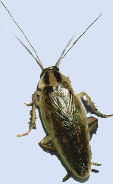
Cockroaches
Cockroaches thrive where food and water are available to them. Even tiny amounts of crumbs or liquids caught between cracks provide a food source. Use traps or visual inspections to help determine if treatment is necessary. If populations persist, reevaluate the situation. Look for other sources of infestations, make sure that all possible entryways are blocked, be certain that food and water sources are eliminated as much as possible, and continue sealing and eliminating hiding places. It may be necessary to move bait stations to other locations, use more stations, or apply additional dabs of bait if gel baits are being used. When cockroach populations are under control, continue monitoring with traps on a regular basis to make sure reinfestation is not taking place. Maintain sanitation and exclusion techniques to avoid encouraging a new infestation. If severe reinfestations of household cockroaches continue to recur, consider that they may be coming in with items such as cardboard boxes. If you suspect cockroaches enter with groceries brought into the home, stop patronizing that market. Frequently they will enter from neighboring apartments if you live in a multiple family dwelling.
Mosquitoes
Mosquitoes are small flying insects that feed on blood. Mosquito bites often swell and itch, though most go away after a few days. Some mosquitoes are known to transmit disease. In Tennessee, a few people each year get sick from diseases such as West Nile virus and Lacrosse Encephalitis. Mosquitoes lay their eggs in water. Having standing water around your house can lead to more mosquitoes. To fight the bite, do not let water stand in open containers such as planters, bird baths, pools, ponds or tires. When outdoors, use insect repellant. Click here for more information on controlling mosquitoes.
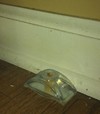
Ants
Ants are common pests. When ants get in your house, it is important to go after the queen ant, not just the ants you can see. Although pesticide sprays can kill ants, it is often better to use ant baits. Ant baits aim to destroy the entire ant colony, not just the ants you can see.
Red fire ants are imported pests. Fire ants like to build mounds in disturbed soil. Fire ants bite and sting. Imported red fire ants can be difficult to control. Consult with your local Agricultural Extension office for more information about fire ants for more information.
Spiders
Spiders are very common. They eat a variety of insects such as crickets, flies and moths. In Tennessee, two spiders may cause serious medical problems if they bite – the Black Widow and the Brown Recluse. If you get bitten by one of these spiders, seek medical treatment. Filling cracks and holes with caulk or boric acid will deter spiders from entering the living space of your home. There are some newer chemical pesticides made for home use that are also effective at helping to control spiders.
Black Widow
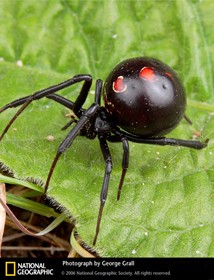
Brown Recluse
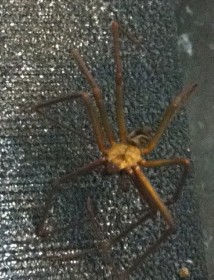
Bed bugs
Bed bugs are not as common as other pests. The adult bed bug is about a ¼ inch long and reddish brown. Young nymph bed bugs are smaller and light-colored. Bed bugs are flat, allowing them fit in small cracks and crevices. Bed bugs usually bite at night.
Bed bugs are often accidentally transported in luggage, clothing, beds, furniture and other items. Be cautious with used or rented beds, bedding, furniture and other items that may harbor bed bugs. Inspect them before bringing them into your home. It can be helpful to use mattress cases on your bed. Avoid having clutter under or around your bed. If you have unexpected bug bites, inspect your bed and bedding looking for the signs of the small brown bugs. If you have severe bites or an allergic reaction, contact your doctor. To read more about bed bugs see our Healthy Homes bed bug webpage or the EPA’s Bed Bug Information webpage. The University of Tennessee Extension has a helpful fact sheet about bed bugs with do-it-yourself ideas. If you believe that you have bed bugs in your home, consider hiring a professional exterminator who has successfully treated for bed bug problems. Be careful when using pesticides to avoid health risks of overuse of pesticides indoors trying to control bed bugs.
Head lice
Head lice are small insects about the size of sesame seed. These insects attach to the skin on the head of a person and lay eggs in their hair. Together the lice and their eggs, called nits, can be annoying but do not cause illness.
Head lice move by crawling. Head lice cannot hop or fly. Personal hygience or cleanliness have little to do with head lice. Head lice are spread by direct contact with the hair of a person with head lice. Anyone who comes in head-to-head contact with someone who has head lice is at greatest risk. Spread by contact with clothing such as hats, scarves and coats or personal items such as combs, brushes or towels is less common though possible.
The U.S. Food & Drug Administration, Centers for Disease Control and Prevention, National Association of School Nurses and Harvard College have resources on how to control and treat head lice.
Treatments are available both over-the-counter and by prescription. Normal treatments are hair shampoos or skin lotions. A special "nit comb" can be used to remove dead lice and eggs. Head lice are more common with children and can spread at school, sporting activities, and camps. Each school sets its own policy about head lice.
Pests in a rental home
For residents having pest problems in rental housing, first alert your landlord of the pest problem in writing. If your landlord does not eliminate the pests, please refer to our healthy homes information for renters for additional information.
Government partners
University of Tennessee Extension Service (UT)
http://utextension.tennessee.edu/
Tennessee Department of Agriculture (Ag)
Pesticide Information
tn.gov/agriculture
U.S. Environmental Protection Agency (EPA)
Pesticides
www.epa.gov/pesticides
National Pesticide Information Center
http://npic.orst.edu/
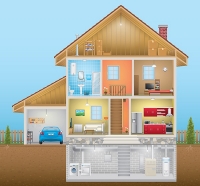
Additional resources
Poison Control Center 1-800-222-1222
www.aapcc.org
Centers for Disease Control and Prevention
Head lice information for schools
www.cdc.gov/parasites/lice/head/schools.html
Head lice webpage
www.cdc.gov/parasites/lice/head/index
US Food and Drug Administration
Treating and preventing head lice
www.fda.gov/ForConsumers/ConsumerUpdates/ucm171730.htm
National Association of School Nurses
Position Statement for Head Lice Management in the School Setting
https://www.nasn.org/nasn-resources/professional-practice-documents/position-statements
American Academy of Pediatrics
AAP updates treatments for head lice
https://publications.aap.org/pediatrics/article/150/4/e2022059282/189566/Head-Lice
Harvard College
Head lice advice for childcare flowchart
www.ehs.harvard.edu/sites/ehs.harvard.edu/files/head_lice_advice_for_childcare_flowchart.pdf
WebMD
Back to school? Back to head lice season
www.webmd.com/parenting/features/back-school-head-lice-season#1
U.S. Environmental Protection Agency (EPA)
Bed Bugs
www.epa.gov/bedbugs
